"Everyone is becoming an expert in image-making" says photographer Cristobal Palma
Facebook, Instagram and Flickr are posing a serious challenge to professional photographers and changing the way architects work, says architectural photographer Cristobal Palma (+ interview + movie).
"Everyone is becoming an expert in image-making, which makes things more challenging but at the same time exciting for photographers," said Palma, in an interview with Dezeen to coincide with the release of a compilation of his architectural movies.
Born in the UK in 1974 but based in Chile, Palma is one of the leading architectural photographers in South America, and one of the first to make the switch from film to digital, and to experiment with moving images.
"I started doing little shorts the minute I went digital with the Canon 5D in 2010 and almost by surprise realised that the camera had a video option," said Palma.
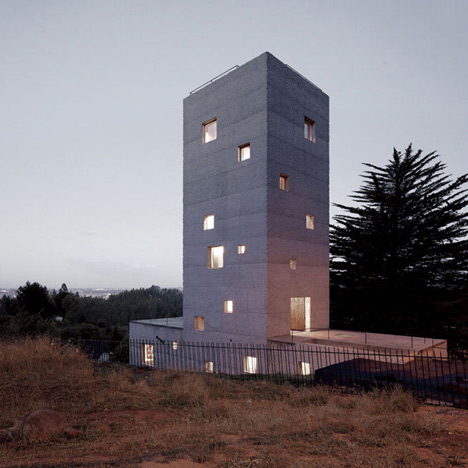
Palma said the rapid shift to digital has enabled increasing numbers of architects and designers to self-publish and edit visual representations of their work, which is in turn affecting the work they produce.
"The main shift in photography and other creative fields is not so much how the production of images is becoming easier and cheaper, which in itself is a massive change, but the ability that everyone has now to self-publish with Instagram, Facebook, Flickr and so on," said Palma, 40.
"Many people are becoming editors of how their own work or personal experiences are shared, and that is feeding back into the work and life in general."
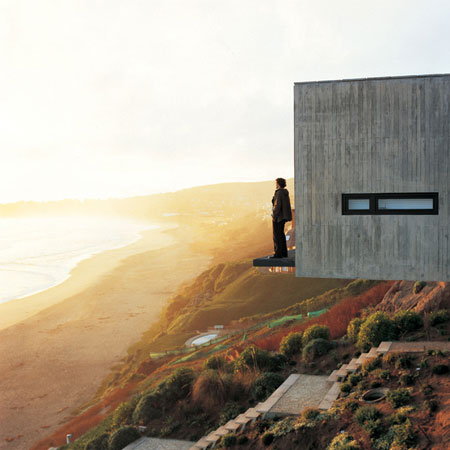
Palma, whose clients include this year's Serpentine Gallery Pavilion architect Smiljan Radić and other rising stars from South America like Pezo von Ellrichshausen and Adamo-Faiden, said that digital platforms were accelerating a change in attitude towards photography and the consumption of imagery.
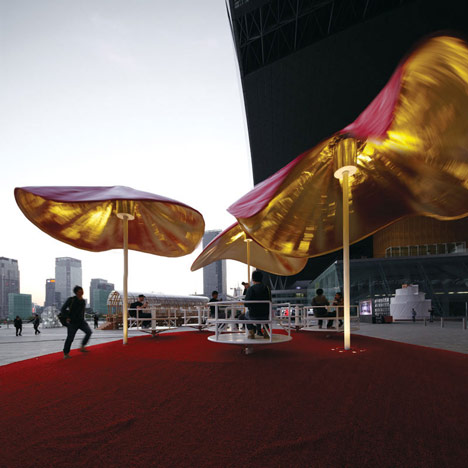
This is having a knock-on affect in the publishing world, meaning photographers are having to change the way they shoot to take into account a shift away from print publications.
"In terms of format and composition, when I started we used to think in terms of paper: 'this could be a lovely double-spread' or 'this picture has cover potential'," said Palma. "But now most of the stuff goes directly to the web and stays there."
For Palma, who originally trained as an architect, the biggest impact from digital photography arrived with the purchase of a Canon 5D camera, which has a built-in high-quality video function, and a subsequent move into film-making.
In 2012 he produced a series of seven short films that formed part of the Chilean Pavilion at the Venice Architecture Biennale. At the end of last year he was named one of the winners of Santiago's Architecture Film Festival.
His latest video, published at the top of this page, is a super cut of some of his best film shots from the past four years – including images from the New World Symphony by Frank Gehry, a Solo House by Pezo von Ellrichausen (pictured below), Clifftop House Maui by Dekleva Gregoric Arhitekti and Orquideorama by Plan B + JPRCR.
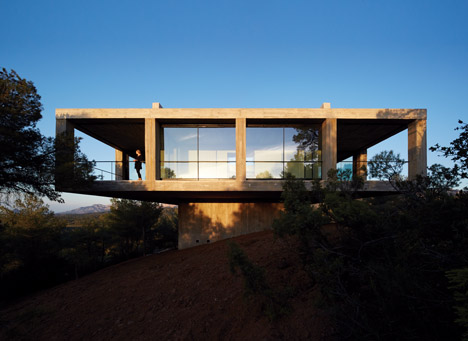
But movie making requires more strategic planning than still photography, said Palma.
"Usually you just have to work with what you find on location on the day so you have to be very sensitive to the different dynamics of the place and project, and develop a sense of what is going to work not just as a single piece of nice footage but rather as part of a narrative," he explained.
"In that sense you need to be quite strategic in terms of producing enough material for the editing stages, because is very unlikely that you will be able to come back and fill the gaps, as it were."
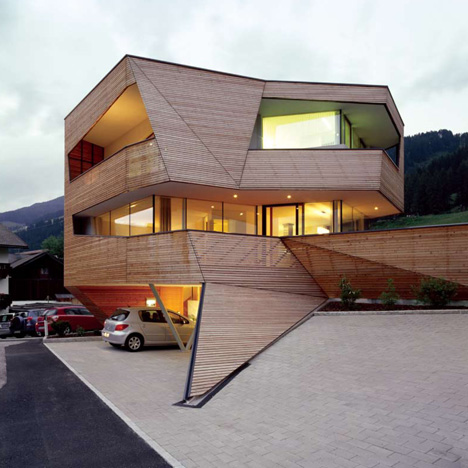
Here is a transcript of our interview:
Marcus Fairs: Tell us about your background – where are you from? Where did you grow up? What did you study?
Cristobal Palma: I was born in the UK in Oxford, 1974, but I grew up in Santiago where I live now. I went back to the UK to study at the AA where I did first year and Intermediate School and got my RIBA Part I.
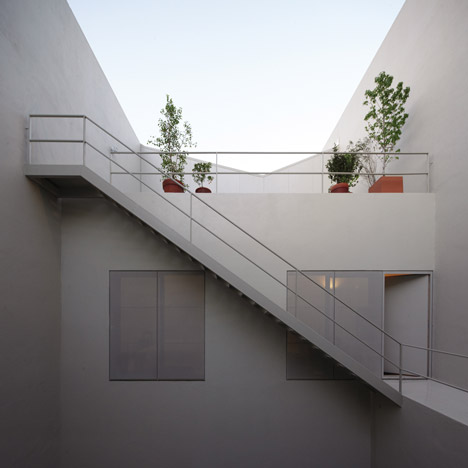
Marcus Fairs: How did and when you start out in architectural photography?
Cristobal Palma: While I was in the middle of my diploma I decided to leave the AA to try photography because it was quite evident that the best possible scenario if I stayed was to become a really mediocre architect. After leaving the AA I worked as an assistant for a couple of years before I started getting my own commissions.
Marcus Fairs: Which other architectural photographers do you admire and why?
Cristobal Palma: Although I do respect greatly the work of many architectural photographers, I always found that the most interesting stuff was outside architectural photography itself. When I was at the AA the Dusseldorf school was very dominant and influential and I guess that in that context [German visual artist] Andreas Gursky was my strongest reference.
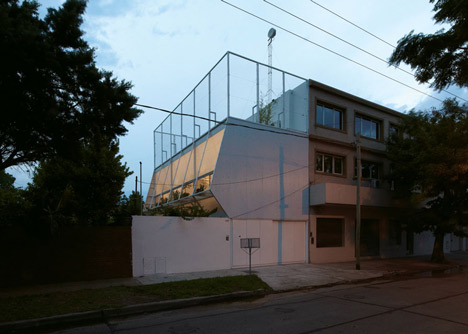
Marcus Fairs: What was your first camera?
Cristobal Palma: My first camera was a Nikon FM that my dad gave me when I was 12. My first "professional" camera was a Mamiya RB67 that I bought after I left the AA. Then I started using a Fuji GX680 until I went digital with a Canon 5D in 2010.
Marcus Fairs: What are the differences between film and digital?
Cristobal Palma: Film and digital are different in so many respects... but I guess if you have to bring it down to two main basic elements I would say speed and cost, both of which have a great effect on the whole creative process. I feel quite lucky to have been able to experience both.
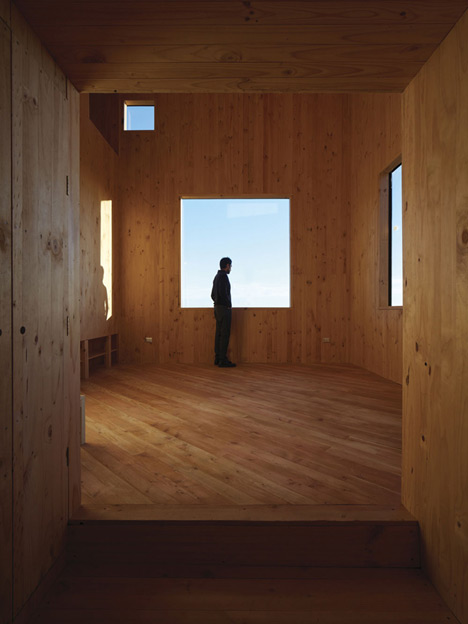
Marcus Fairs: What difference is digital making to the world of architectural photography – and even to architecture itself?
Cristobal Palma: The main shift regarding digital making in photography – and other creative fields – is not so much how the production of images is becoming easier and cheaper, which in itself is a massive change, but the ability that everyone potentially has now to self-publish with Instagram, Facebook, Flickr, etc. Many people are becoming their own 'editors' of how their work, or their personal experiences, are shared or published and that is feeding back into the actual work and life in general.
Everyone is becoming an expert in image-making which makes things more challenging but at the same time exciting for photographers. Regarding architectural photography specifically, again I see the main shift not only in the way images are produced but more in the way the they are being consumed, the shift from paper to online, and how that is affecting the editorial world. For instance just in terms of format and composition, when I started we used to think in terms of paper – i.e. "this could be a lovely double-spread" or "this pic has cover potential" – but now most of the stuff goes directly to the web and stays there.

Marcus Fairs: What about movies? When did you make your first movie?
Cristobal Palma: I started doing little shorts the minute I went digital with the Canon 5D in 2010 and almost by surprise realised that the camera had a video option. The first short I did was of the Biblioteca España by Giancarlo Mazzanti in Medellin. That building is in itself is a cinematic experience, from the way you arrive via cable car, the people you meet coming out of the station, etc., so it was the perfect place to start.
Marcus Fairs: What different skills does a stills photographer need to make a good movie?
Cristobal Palma: It is very difficult to script a story beforehand and usually you just have to work with what you find on location on the day so you have to be very sensitive to the different dynamics of the place and project, and develop a sense of what is going to work not just as a single piece of nice footage but rather as part of a narrative. In that sense you need to be quite strategic in terms of producing enough material for the editing stages because is very unlikely that you will be able to come back and fill the gaps, as it were.
Editing is crucial, and here you can either do it yourself as many guys do, or collaborate with someone. In my case I have been working with the same editor, Francisco Jullian, for the last couple of years and his input is crucial. We always do the same: to start I just give him very general instructions, he then brings a first version that we discuss and start developing together.
Marcus Fairs: What kinds of architecture do you like photographing best and why?
Cristobal Palma: I prefer to work with small practices, with architects you can have a meaningful conversation with, learn from and talk about life in general. The best architects tend to be the ones with a sense of humor.
Marcus Fairs: What kinds of architecture do you like making movies about and why?
Cristobal Palma: Public buildings are always easier because the are naturally activated by people. With private homes it is a bit more staged. But I enjoy both.
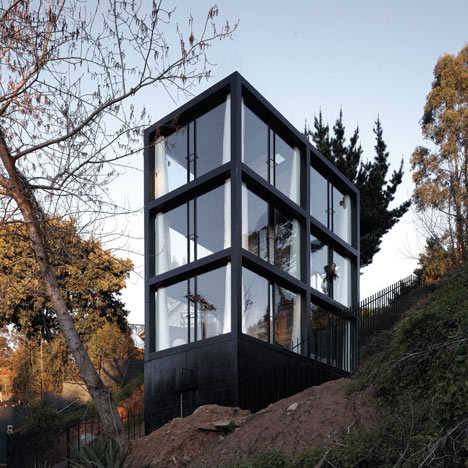
Marcus Fairs: What are your favourite buildings you've shot and why?
Cristobal Palma: A couple of years ago I started a project here in Chile called Espacio Continuo, which consisted in the recording of each 'caracol comercial' or 'snail building' built in Santiago and other Chilean cities in the late seventies and early eighties, modelled originally on Frank Lloyd Wright's Guggenheim. These structures designed by a number of different – mostly anonymous – architects are the most fascinating set of places I have shot. A kind of late modernism that went terribly wrong that left us with the most funky-yet-almost-descarted indoor commercial spaces posible.
Casa Poli by Pezo von Ellrichshausen is for many reasons one of my favourite projects and definitely the best house I have shot. I always felt that the pictures do not do justice to the place and do not get even close to the spacial experience you have when you are there. Termas Geometricas by German del Sol is the best example of landscape-architecture I have ever experienced. On a more urban level, most of the stuff I get to do in Colombia is amazing, Orquideorama by Plan:b + JPRCR is the best urban park I have been to.
Marcus Fairs: Who are your favourite architects and why?
Cristobal Palma: Howard Roark.
Marcus Fairs: What's your favourite image you've ever shot and why?
Cristobal Palma: My second or third commission in Chile, like a hundred years ago, was a house by Smiljan Radić four hours south of Santiago. We drove there quite early and when we got to the house there was this lovely quite heavy fog. The first shot I did was of the facade and I knew there and then that that picture was going to be for a number of reasons very special. A couple of months later they used that picture for the cover of a+u and ever since it has been one of my favourite pictures.
Marcus Fairs: What's your favourite movie you've ever shot and why?
Cristobal Palma: My favourite movie is a short documentary I did called Piling Up. This was one of seven shorts I did for the Chilean pavilion for the 2012 Venice biennale. It is inspired by the research of Pedro Alonso on the massive topographical changes to the landscape done by mining in the north of Chile.
Marcus Fairs: Tell us about this movie compilation – what buildings are in it and why did you choose them?
Cristobal Palma: There are around 25 projects from more than 20 architects. With Francisco, my editor, we went through all the material I have produced since 2010 and started to create a basic narrative linking different aspects of the different buildings.